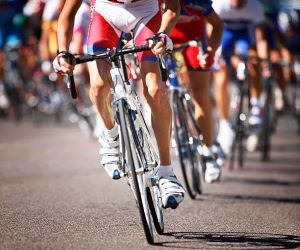Discover the most important cycling safety accessories every rider should have, from helmets to visibility gear, for safer and more confident rides.
HOW DO I AVOID BONKING IN CYCLING?
Bonking—also called “hitting the wall”—is one of the toughest challenges cyclists face on long rides. It happens when glycogen stores run low, leaving the body unable to sustain intensity. The result is sudden fatigue, weakness, and loss of focus that can end a ride abruptly. But bonking is preventable. With the right fueling strategies, hydration, pacing, and recovery habits, riders can keep energy levels steady and maximize performance. This article breaks down the science behind bonking, the warning signs, and proven methods to prevent it, ensuring cyclists stay strong from the first mile to the finish.

Understanding bonking and its causes
Bonking occurs when muscle and liver glycogen stores are depleted. Glycogen is the body’s primary fuel for endurance exercise. Once it runs low, the body relies heavily on fat metabolism, which cannot provide energy fast enough for sustained cycling intensity. The result is dramatic performance decline.
The science behind bonking
During moderate to high-intensity cycling, the body burns a mix of carbohydrates and fats. Carbs supply quick energy, while fat supports longer durations. However, glycogen stores are limited—roughly 90–120 minutes of hard effort before depletion. Without replenishment, energy levels crash.
Liver glycogen maintains blood glucose for the brain.
Muscle glycogen powers contractions during pedaling.
Depletion leads to physical weakness and mental fog.
Common triggers of bonking
Bonking isn’t just about skipping snacks. It can be triggered by a mix of factors:
Insufficient pre-ride meals or carbohydrate loading.
Failing to refuel regularly during long rides.
Riding harder than trained capacity.
Poor hydration, which affects carbohydrate absorption.
Understanding these causes is the first step in building a strategy to avoid hitting the wall on the road.
Nutrition and fueling strategies
Nutrition is the most critical factor in avoiding bonking. Riders who fuel correctly before and during rides can extend endurance, sustain higher intensities, and recover faster.
Pre-ride fueling
Carbohydrate-rich meals before riding maximize glycogen stores. Ideal timing is 2–4 hours pre-ride, with foods that are easily digestible and low in fat or fiber to avoid stomach distress.
Examples: oatmeal with fruit, rice with eggs, or a bagel with nut butter.
Avoid heavy, greasy foods that slow digestion.
On-the-bike fueling
During rides longer than 90 minutes, cyclists should aim for 30–60 grams of carbohydrates per hour. This can come from energy gels, bars, chews, or whole-food options like bananas and dates. For extreme endurance rides, intake may increase to 90 grams per hour with mixed carb sources (glucose + fructose).
Carry a mix of quick-digesting (gels) and slow-release (bars) carbs.
Start fueling early, not when fatigue sets in.
Practice fueling in training to avoid GI distress on event day.
Hydration and electrolytes
Dehydration reduces performance and complicates carbohydrate metabolism. Cyclists should aim for 500–750 ml of fluid per hour, with electrolytes to replace sodium lost in sweat. Sports drinks that combine carbs and electrolytes offer dual benefits for endurance fueling.
In short, consistent fueling and hydration are the cornerstone of bonk prevention.
Training, pacing, and recovery
Fueling is only part of the equation. Training, pacing, and recovery strategies also play major roles in avoiding bonking during cycling.
Smart pacing
Riding above your sustainable threshold accelerates glycogen depletion. Amateurs often push too hard early in rides or group events, only to crash later. Using a power meter or heart-rate monitor helps maintain steady effort and preserve glycogen stores.
Training adaptations
Regular endurance training improves fat utilization, sparing glycogen for when it’s needed most. Long steady rides build metabolic efficiency, while interval training enhances the body’s ability to handle surges without draining energy reserves.
Include long base rides weekly to build endurance.
Mix in tempo and threshold intervals to improve fuel efficiency.
Train the gut by practicing nutrition strategies during rides.
Recovery and glycogen replenishment
Post-ride recovery is vital to prevent future bonking. Glycogen replenishment should begin within 30–60 minutes after riding, with a mix of carbs and protein (3:1 ratio). Proper recovery ensures muscles are fueled for the next session.
Ignoring recovery compounds fatigue, making bonking more likely on subsequent rides. Sleep, nutrition, and rest days are non-negotiable for sustained performance.
Ultimately, avoiding bonking is about balance: smart fueling, measured effort, and consistent recovery. Cyclists who integrate these habits not only avoid the dreaded wall but also unlock their best performance on the road.
YOU MAY ALSO BE INTERESTED






